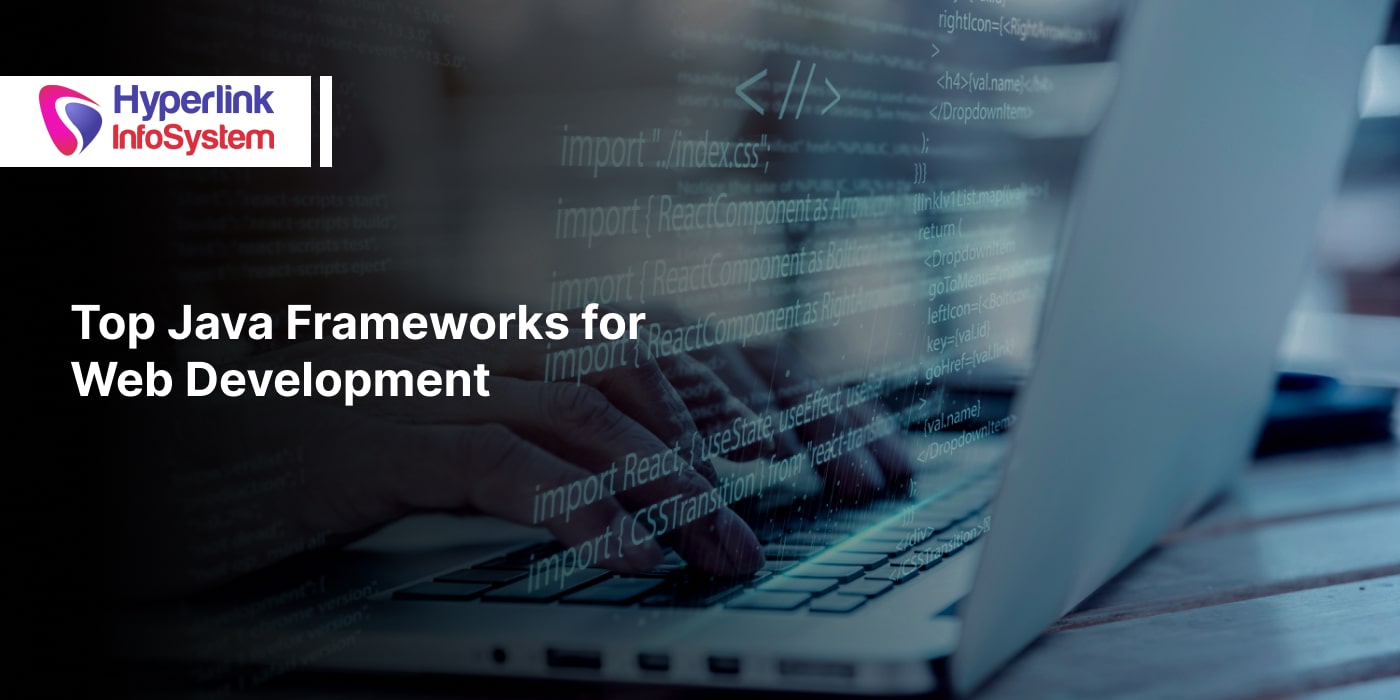AI in Fintech - Overview, Top Use Cases, Challenges, Trends, and More
Jun 2025

Desperate times call for desperate measures. The entry of AI in Fintech is more of a compulsion than a choice. Ever-changing regulations, fraud and cyber threats, rising customer expectations, and vast volumes of unstructured data have created a do-or-die situation for organizations.
We call it a do-or-die situation because companies can no longer use manual and outdated methods to conduct business or manage risks. From an estimated $17.79 billion in 2025 to a staggering projection of $52.19 billion in 2029, the AI fintech market’s size shows immense promise. The impact of AI in Fintech spans multiple sectors, with the following consequences.
- Robust Risk Management and Fraud Detection
- Personalized Financial Services
- AI-Powered Credit Scoring and Underwriting
- Process Automation in Various Departments
- Algorithmic & High-Frequency-Trading
The positive effects of AI integration in Fintech paint a positive picture, but there is a long way to go. Legacy equipment in banks and financial institutions hinders the full adoption of AI. Data silos and biased data impair the performance of AI models. Apart from these factors, regulatory challenges, high infrastructure costs, and hiring AI/ML can be a pocket drainer for most companies.
Artificial intelligence helps Fintech companies overcome their challenges and stay relevant. This blog gives readers a brief overview of AI in Fintech, adoption challenges, impact, use cases, and more. Without further delay, let the games begin.
AI in Fintech - How, When, and Why?
A report states that 95% of Fintech companies face compliance issues, and many have paid thousands of dollars in fines. This is just one example. Traditional tools are not enough to solve the grassroots-level problems. The Fintech industry was forced to evolve and embrace AI.
Online fintech companies arrived on the scene during the 1990s and 2000s. Consumer-facing Fintech companies adopted AI for real-time transaction analysis and to provide customers with personalized financial management insights. Adoption of advanced AI and ML in Fintech began around 2020. Major shifts included the following-
- Manually-Trained Models to Self-Learning Systems
- NLP Becomes Real-Time and Contextual
- Rule-Based Fraud Detection to Graph-Based ML
- End-to-End MLOps Pipelines
- Personalization Powered by Deep Learning
AI in Fintech - Adoption Driven by Compulsion
Necessity is the mother of innovation. This proverb fits perfectly in the context of AI in Fintech. What are the pressing issues that compel Fintech companies to embrace AI? Let’s explore more.
1) Data Explosion
Transactional, behavioral, and market data started pouring in from smartphones, APIs and embedded ecosystems, CRMs, social feeds, cloud-based architecture, and other sources. This massive influx of data completely overwhelmed Fintech companies, and they didn’t know how to handle it.
- Magnitude of the Problem - With so much data at hand, real-time processing became a challenge. Neither the data analysis nor legacy systems were up for the task. Rule-based systems operate on rigid logic, and they buckle down in complex/dynamic scenarios. Unlike AI, they didn’t adapt to situations. This increased the chances of missed opportunities and provided cybercriminals with opportunities to exploit these loopholes.
- Regulatory Pressure - Regulatory bodies were watching the mess being created all along. They demanded that companies implement measures to detect fraudulent transactions in real-time. Whether it's approving loans or flagging transactions, the dynamic nature of the fintech market requires proactive action. A delay of a single millisecond can mean losses amounting to millions of dollars.
- AI Adoption - There is only one solution to ever-changing regulations, increased customer expectations, and vast volumes of data - AI and ML.
2) Evolving Fraud and Cyber Threats
Suspicious transactions became less obvious. The threats were there, but they became well-disguised and hard to identify. Existing systems were unable to handle these evolving threats. Cyber criminals and hackers have taken it to the next level by leveraging automation, bots, AI, and other techniques to execute their malicious intentions.
- Seriousness of the Problem - Conventional fraud detection systems used rigid logic that was ineffective against sophisticated, evolving threats. Hackers and fraudsters have found ways to bypass these checks and commit financial crimes.
- Losses Piling Up - The fraud led to losses amounting to millions of dollars. It also affected the trust and reputation of Fintech platforms.
- AI Adoption - With AI and ML integration, systems no longer require manual configuration. Fintech companies use these systems to analyze past behavior, learn from new data and patterns, and implement steps to detect fraud in real-time.
3) Pressure to Provide Hyper-Personalized Services
Customers demand more from businesses. They were not satisfied with basic services. The trend started with E-Commerce players like Amazon. Later, Netflix and Spotify jumped on the bandwagon. These companies gather customer data, purchase history, and analyze their behavior to provide personalized recommendations. Customers in FinTech demanded the same level of individualized services.
- Major Obstacle - Most Fintech companies relied on a combination of legacy equipment, fragmented systems, and financial products that come in the form of static offerings. Be it loans, insurance, or other services, generic products were not enough to satisfy customers. Most importantly, meeting compliance requirements was easier said than done.
- Pressure - Customers started comparing banks to platforms such as Apple, Google, and Netflix that anticipate user needs and offer personalized recommendations while ensuring seamless experiences. Neobanks and Big Tech companies unleashed the power of AI to refine their financial offerings. Now, traditional banks and financial institutions are under pressure to match the big players.
- AI Adoption - Understanding user behavior and market changes to offer tailored recommendations was not an option anymore. Fintech companies were left with no alternative but to adopt AI.
4) Manual Compliance and Reporting
Compliance is non-negotiable in the Fintech sector. However, traditional systems were unable to handle the volume and complexity of AML monitoring, KYC processes, and regulatory reporting, while compliance costs were soaring. Another issue was that compliance costs were eating into company profits.
- Cluster of Obstacles - Using human labor for document verification and ensuring compliance hampered productivity. Traditional systems couldn’t detect actual fraudulent transactions and flagged anything that seemed unusual. Staying updated in real-time with regulations in multiple jurisdictions and ensuring compliance was impossible.
- Mounting Pressure - Fintechs that failed to report/detect suspicious transactions quickly faced the risks of hefty fines, investigations, and closure of business. Manual systems were not capable enough to handle the increased compliance workload. The complexity and associated costs were also a major drain on company resources.
- AI to the Rescue - AI-powered solutions emerged as a cost-effective yet powerful solution to automated document reviews, flag compliance risks, and provide audit trails for regulatory bodies. It did all this in less time and with greater accuracy.
5) Inefficient Borrower Risk Assessments
Traditional credit scoring models consider data from predictable and easily available sources such as credit cards and mortgage providers, along with other formal credit lines. What parameters do these scoring models consider? Some of these parameters include substantial borrowings, timely payments, and using only a small percentage of the available credit limit.
However, these parameters are ineffective in measuring scores in middle-income countries where people may not have fixed income sources. Also, the data sources can be outdated or inaccurate.
- Major Obstacles - Fintech companies used to emulate the scoring partners of traditional financing institutions in the USA and other Western countries. These scoring models were optimized for prime markets. Without proper evaluation, Fintech companies could not lend to these people. A large market segment remained untapped while competitors with alternative scoring models capitalized on this opportunity.
- Fintech Dilemma - There was intense pressure to target segments with no banking history and those who depended on alternative financial services like payday loans. That said, underwriting these people (untapped segments) using older models and not dealing with defaulters was a risk companies were afraid to take.
- AI the Savior - AI-based models evaluated other data, such as utility bills and behavior patterns, for risk assessment and tapped previously untouched markets.
6) Operational Complexity
Scaling was not a cakewalk for Fintech companies earlier. As they expanded their operations, they had to cater to more users, a larger range of products, and other geographies. Processing thousands of cases and handling queries and disputes while relying on duct-tape solutions proved to be expensive in the long run. Scaling came at the cost of higher expenses, customer churn, and tight margins.
- Obvious Issue - For most Fintech companies, earning a profit while running operations was an uphill task. This is because while they offer services like digital payments, BNPL, retail brokerage, and stock trading, there is not much money to be made.
- Pressure - In light of the above problems, Fintech companies have had to lower the costs associated with customer onboarding, acquisition, and servicing.
- AI Enters the Scene - Managing thousands to millions of support tickets, processing documents in real-time, and making instant decisions became seamless with AI. This increased profitability.
7) Dynamic Market Conditions
Fintech models engaged in lending, investing, and trading activities use AI models trained on historical data. They assess an individual’s creditworthiness, asset behavior, and risk correlations based on older events. But in the case of anomalies like the COVID-19 pandemic, wars, or other unforeseen circumstances, things can go haywire. Risk models become meaningless, safe assets become high-risk, and markets become hard to exit.
- Stumbling Blocks - Static models that were based on assumptions and did not update automatically. It required human intervention. Also, the heavy dependence on historical data proved ineffective in volatile markets.
- Pressure - Older risk models are ineffective in a changed world where interest rate fluctuations, geopolitical instability, and the after-effects of the COVID-19 pandemic have become the new normal. Customers demanded safety and performance, while investors demanded robust risk management.
- AI Enters the Scene - Integrating models with AI meant it now gathers and analyzes data and adjusts predictions in real-time. Not just that, AI-powered models detect risks before they cause ripples in the market.
Pros and Cons of AI in Fintech
The pros and cons of artificial intelligence in Fintech are as follows.
Pros of AI in Fintech
- Fraud Detection - Identifies suspicious transactions using pattern recognition.
- Personalized Services - Offers tailored financial advice, credit scoring, and investment recommendations.
- Speedy Services - Expedites processes like loan approvals, underwriting, and customer service.
- Risk Management - Improves forecasting and reduces exposure through predictive analytics.
- Cost Efficiency - Reduces operational costs by automating routine tasks.
Cons of AI in Fintech
- Model Bias - Based on the data used to train the AI models, it can inherit and amplify biases. This may result in poor decisions.
- Data Privacy - Storing and handling vast volumes of confidential financial data raises privacy and security concerns.
- Lack of Clarity - Some AI decisions can be hard to understand and interpret.
- Excessive Dependence - Rampant use of AI without human supervision may significantly increase the risk in edge cases.
- Regulatory Challenges - Existing regulations have not evolved at the same pace as AI, increasing the risks for investors and customers.
12 Use Cases of AI in Fintech
AI and ML in Fintech are not new phenomena. It's just that the larger enterprises understood its transformative capabilities and embraced it early on. AI can benefit diverse businesses, including banks, lending institutions, investment, and payment processing companies.
It has been just a decade, and we are witnessing the magic of AI in Fintech. As AI evolves, it will continue to transform the Fintech landscape. Below are some of the most popular use cases of AI in Fintech.
1) Deeply Personalized Customer Experiences
Not every customer/investor will benefit from the same service or financial advice. 53% of customers expect their financial providers to deliver personalized experiences. Depending on the target market, specific needs, and preferences, companies can deliver hyper-personalized customer experiences.
Principal Applications
- Predictive Customer Needs - Customers expect proactive service. AI models analyze past transactions, behavior, social media partners, and other aspects to offer personalized recommendations that resonate with customers.
- Tailored Engagement - Instead of bombarding customers with generic and boring ads, AI studies customers’ behavior or recent actions to provide relevant suggestions.
- Omnichannel Journeys - Whether it's mobile, tablet, web, or voice-powered search, AI ensures a uniform experience across all touchpoints. It monitors your behavior consistently and responds accordingly.
2) AI-Enabled Fraud Detection
As per a study, global losses due to digital fraud will amount to $348 billion by 2027. AI’s arsenal includes a powerful set of tools that can minimize the occurrence of fraud.
Principal Applications
- Real-Time Anomaly Detection - Analyzing transaction data in real-time analysis, AI flags and blocks suspicious transactions instantly.
- Behavioral Biometrics - Passwords and other common authentication methods may not be enough. AI detects an individual’s typing/voice patterns and unique behavior to determine if the account is being accessed by someone else.
- Collaborative Threat Intelligence - Accesses extensive records from the entire fintech ecosystem to identify and neutralize threats quickly.
3) Intelligent Risk Management
Managing risk is key to weathering the storms of the fintech sector. AI identifies risks in advance and assesses their potential impact, ensuring companies can take the right steps to mitigate their impact and emerge victorious.
Principal Applications
- Predictive Risk Modeling - Advanced AI algorithms analyze historical and real-time data to identify risks that could have negative impacts on financial performance or decision-making.
- Scenario Planning - Stimulates thousands of what-if scenarios simultaneously and applies them to the business. This helps businesses develop strategies to combat such situations.
- Compliance Automation - Monitors the regulatory landscape continuously and adapts to changes. This reduces compliance costs while limiting risk exposure.
4) AI-Enhanced Stock Trading
Every millisecond matters in the trading world. Advanced AI and ML algorithms analyze vast volumes of market data in real-time and identify key patterns and signals. When the time is right, the algorithm executes the trade automatically. It also monitors trends on social media and the Fintech market and adapts accordingly.
Principal Applications
- High-Frequency Trading - Together, AI and ML identify the right opportunities, optimize execution, and imitate human behavior. Capitalizing on microseconds, AI plays the right cards and makes significant profits.
- Algorithmic Strategy Optimization - AI models spot subtle price differences, buy low, and sell at a higher price. Besides executing trading activities faster than humans, it identifies price movement patterns and buys/sells automatically, helping companies earn profits.
- Sentiment Analysis - Listening to the constant chatter on social media, news articles, and other sources, the AI model understands sentiments. Observing these sentiments in real-time, AI provides traders with valuable insights to make informed decisions.
5) Streamlined Credit Scoring & Lending
Manual credit scoring and lending can be time-consuming. At the same time, humans may be unable to gauge the risks associated with it. Thanks to AI, banks and lenders can navigate these risks while making smarter, quicker, and fairer decisions.
Principal Applications
- Alternative Credit Scoring - Traditional scoring methods may not be ideal for middle-income countries and emerging economies. Alternative credit scoring methods analyze other aspects, like online behavior and spending habits, to determine lending risks.
- Financial Inclusion - Individuals like freelancers and those who have not taken a loan or used cards don’t have a credit history. With AI’s help, financial and lending institutions can understand the behavior of these individuals and qualify them for loans and other services.
- Loan Automation - From application review and background checks to loan approval, AI expedites and streamlines the entire process. Minimizing paperwork and processing time, this AI-powered loan automation makes loans accessible to more people.
6) Blockchain and AI Synergy
When Fintech companies use the combined might of artificial intelligence and blockchain technology in their operations, it creates a robust, secure, and transparent system for managing funds and other services.
Principal Applications
- Smart Contracts - Smart contracts on the blockchain execute automatically when certain conditions are met. AI infuses intelligence into these blockchain contracts, which enables them to understand complex situations and make smart decisions. These smart contracts minimize risks and increase the accuracy in transactions, plus they eliminate human intervention.
- Fraud Detection in Decentralized Systems - Blockchain transactions are great to ensure data security and confidentiality, but criminals are finding newer ways to trick the system. With AI as a vigilant watcher, any suspicious behavior on the network, such as dodgy money transformers, is highlighted instantly. This reduces the chances of fraud and protects customers’ funds without the need for a central authority.
- AI-Enhanced Decentralized Finance (DeFi) - Managing money and conducting activities like trading, borrowing, and lending without banks becomes a reality with DeFi. It provides smart robo-advisors that guide individuals with decision-making. Not only do they predict user needs, but they also make platforms more secure and efficient.
7) Achieving Cost-Efficiency With AI
Fintech businesses are often burdened with repetitive work while dealing with slow processes and technical issues. With AI, companies can boost efficiency and productivity while curtailing costs. Let’s find out how it accomplishes these goals.
Principal Applications
- Process Automation
AI handles routine tasks like the following-
- Checking Customer Identity (KYC/AML)
- Matching Financial Records (reconciliation)
- Report Generation
How is this beneficial for Fintech companies? Cutting down on manual and repetitive tasks means companies can focus on productive tasks and serve customers speedily.
- Operational Analytics
With AI by their side, companies can monitor operations in real-time to identify-
- Identifies sluggish processes that reduce productivity.
- Which systems, software, and employees cause delays?
- How long does it take for customers to get loans or be verified?
After getting these insights, Fintech companies can understand the hurdles and find ways to address them.
8) Proactive Cybersecurity
Increased dependence on digital platforms in the Fintech sector has its benefits, but it also makes them vulnerable to cyber threats. Cyber criminals are finding newer ways to target Fintech companies. Using AI has made life easy for them through constant monitoring, learning, and threat response systems. They do all of this before humans even sense danger.
Principal Applications
- Threat Detection and Mitigation - AI monitors the entire operation in real-time, including logins, transactions, and user behavior. If it notices any unusual behavior, it stops the fraud even before it happens. In this way, customers can use Fintech services without worrying about security.
- Dark Web Monitoring - Cybercriminals often sell data such as credit card numbers, bank details, and login credentials on the dark web. Fintech companies can leverage AI to conduct deep scans and identify where confidential data is being sold. Next, it alerts financial institutions about the leak. Users can change their account passwords and prevent financial losses.
- Adaptive Security Controls - AI does not stop with threat detection. Over time, it identifies patterns of attacks, learns from them, and strengthens the system’s security mechanisms. This adaptive learning feature minimizes the need for regular updates. Additionally, the system gets smarter and security is reinforced over time.
9) Enhanced Wealth Management
Premium financial advice and investment planning are not just for the elite. Fintech uses AI to ensure that a larger segment of the population can access these services. Some of the key applications of AI in Fintech wealth management are as follows -
Principal Applications
- Personalized Portfolios - After a 360-degree assessment of your financial situation, including spending and risk-taking ability, AI creates a bespoke investment plan catered to the individual’s needs. Users need not shell out thousands of dollars to receive financial advice. AI provides them expert-level advice that meets their unique needs.
- Auto-Rebalancing - Many investors diversify their investments to get maximum benefits and minimize risks. However, market fluctuations may cause these risks to shift. For example, if 70% of an inventor’s funds lie in stocks and the rest lie in mutual funds. A stock crash could impact his investments. In such cases, the AI automatically rebalances the portfolio by selling shares before they result in losses and invests the surplus money elsewhere.
- AI-Enabled Investing - If a user’s values or preferences align with ESG principles, AI conducts a detailed scan and identifies companies that match the requirements. Then, AI builds a portfolio accordingly. This ensures that users get maximum value for their investments without sacrificing their values.
10) Financial Education 2.0
Investment planning, savings, and retirement planning are no longer a luxury, thanks to AI. Now, most people can get access to personalized financial knowledge and learn the technicalities over time.
Principal Applications
- Tailored Learning - Depending on the user’s existing knowledge, it creates a customized learning journey. For example, an amateur investor will get lessons on the fundamentals of investments, diversification, and managing risks. The benefit of such a customized learning program is that the user learns at their own pace, does not waste time on unnecessary information, and doesn’t spend a lot of money on courses.
- Gamified Modules - Finance and investment can be a dry subject for many. AI-enabled learning introduces gamification elements in courses to make them more exciting and interactive. Users may earn points or unlock new levels, similar to a game. Such gamified learning makes dry subjects interesting and motivates users to learn more while helping them retain most of the knowledge.
- AI Financial Coaches - Unlike conventional investment advisors who work 9 to 5, AI-powered advisors can answer queries 24/7. The best part is that users don’t have to shell out thousands of dollars in return for personalized advice. As far as the quality of the advice is concerned, it can be on par with the most experienced financial advisors or even better.
11) ESG and Sustainable Finance Integration
More and more investors and regulators focus on ESG principles when conducting their activities. To help them achieve these goals, AI incorporates ethical and sustainability principles smartly and quickly.
Principal Applications
- ESG Monitoring - Leverages AI to evaluate sustainability risk across portfolios.
- Green Lending Analytics - Identifies eco-friendly loan opportunities for individuals and evaluates their carbon impact.
- AI-Driven Regulatory Reporting - Automates ESG disclosures and improves transparency.
12) Conversational AI
Customers want convenience, and they won’t settle for ordinary experiences. Conversational AI is an innovative offspring of AI that allows users to talk to an AI-enabled software like humans talk to each other. Similar to E-Commerce portals, conversational AI is becoming commonplace in banking and financial services. Besides round-the-clock service, a conversational AI tool makes conversations simpler and more personalized.
Principal Applications
- AI Chabots and Voice Assistants - Chabots and virtual assistants work 24/7, they answer queries and provide information. Users can type or enable voice chat to interact with the AI tools. Without much delay, the tool gives you the appropriate response. Unlike humans, AI chatbots don’t need rest, and they can handle thousands of queries simultaneously.
- Voice-Activated Banking - This feature allows users to control their finances using voice commands. Besides accessing account balances and investment details, the voice app also facilitates speedy payments and fund transfers. Not only is voice-activated banking convenient, but it's also a blessing for the elderly and the visually impaired.
- Emotion-Recognition - Advanced AI models take it a step further. They not only understand words but also tone, typing style, and the emotional state of the user. If the user is confused or nervous, the AI tool calms them down with the right choice of words. After a few attempts, if the tool is unable to assist the user, it will transfer them to a human. In this way, these AI models make conversions more human-like.
Top 10 Challenges of AI Implementation in Fintech
As seen in the above section, implementing AI in Fintech has numerous benefits. That said, AI implementation in Fintech also has its share of challenges. Below are the 10 challenges of implementing artificial intelligence in Fintech, along with their solutions.
- Data Privacy Concerns
Solution - Implement strict encryption and ensure compliance with data protection laws.
- Bias in AI Models
Solution - Use diverse datasets and conduct regular audits to ensure the fair performance of AI models.
- Regulatory Uncertainty
Solution - Collaborate with regulators and adopt flexible compliance frameworks.
- Legacy Infrastructure Integration
Solution - Use APIs and middleware to integrate AI with older systems.
- Lack of Skilled Talent
Solution - Invest in training programs and strategic tech partnerships.
- High Implementation Costs
Solution - Start with scalable, modular AI solutions to reduce significant investments.
- Model Interpretability Issues
Solution - Apply explainable AI (XAI) techniques for transparency.
- Cybersecurity Risks
Solution - Integrate AI with advanced threat detection and real-time monitoring tools.
- Poor Data Quality
Solution - Establish robust data governance and cleansing mechanisms.
- Reduced Customer Trust
Solution - Ensure ethical use of AI and communicate value with transparency.
9 Emerging Trends for AI in Fintech for 2025
As AI continues to evolve in the Fintech space, it is set to reduce risks while fostering innovation, efficiency, and resilience throughout the ecosystem. Here are some of the exciting trends we can expect to see with AI in Fintech.
Autonomous Finance
Facilitates autonomous management of budgeting and investments, plus informed decision-making.
Generative AI for Financial Content
Customizes financial reports, disclosures, and ensures real-time communication.
Treasury and Liquidity Management
Enterprises can use AI to optimize cash flow, risk hedging, and fund movements between two or more companies.
Federated Learning for Privacy
AI models trained on decentralized data ensure privacy and regulatory compliance across the organization.
Climate Risk Modeling
Conducts a comprehensive assessment and prediction of how climate risks and sustainability risks affect companies’ finances.
Role in RegTech Industry
RegTech Industry is not a fancy term. Companies use AI to ensure real-time regulatory compliance, mapping, and to conduct predictive risk analysis.
Synthetic Data to Train AI Models
Problems like algorithmic bias, poor quality, and incomplete data can cause issues for Fintech companies. Generating synthetic data improves model accuracy and reduces bias.
Tokenization Platforms
Using AI, companies can streamline the lifecycle, pricing, and compliance of tokenized digital assets.
We know these trends are interesting, and you may want to know more about them, but deeper exploration may require a separate blog post in itself. Possibly, we may cover them in the future.
Final Thoughts
Fintech in AI is no longer a buzzword. Companies that incorporate AI in their operations don’t reinvent the wheel. The small change makes their operations more flexible and scalable while boosting performance. Furthermore, this change enables companies to target customers with hyper-personalized offerings, especially ones without a credit history. The 12 use cases of AI in Fintech are just a few examples. With time, AI will play a bigger role in Fintech, increasing automation, reducing risks, and making compliance a cakewalk.
Do you want to integrate AI in your Fintech company? Look no further. Hyperlink InfoSystem is at your service. With a decade-long experience in web and mobile app development, we have served over 5000 clients who speak highly about us. We are more than just a custom Fintech software development company; our technical expertise encompasses Salesforce, AI and machine learning, blockchain, IoT, and other transformative technologies. Speak to one of our experts to see what we can do for your business.
Frequently Asked Questions
A custom fintech software development company like Hyperlink InfoSystem can do miracles for your business. Our bespoke digital solutions include web and mobile apps, platforms, and automation tools to meet your specific business needs. With minor tweaks and adjustments, we can help banking, finance, and other related businesses enhance user experience, improve regulatory compliance, and give them a competitive edge.
Below are some notable Open-AI-powered tools that play a significant role in the Fintech sector. Startups and small companies can manage with manual processes, but as they scale, they require Open-AI-powered tools to automate repetitive tasks, ensure regulatory compliance, and optimize decision-making.
Last but not least, these Open-AI-powered tools enable scalability without hiring more employees. Below are some Open-AI-powered tools that are a boon for Fintech companies in 2025.
- ChatGPT - Automates customer support and provides custom financial advice using natural language.
- Codex - Automates financial scripting and builds custom data workflows for modeling and reporting.
- Embeddings and Vector DBs - Enables semantic search over financial documents and regulatory texts.
- Function Calling APIs - Powers GPT agents that interact with live financial data and execute transactions.
- Custom GPTs - Creates specialized AI assistants for advisors, analysts, and client-facing financial services.
- Open AI and Azure - Provides enterprise-grade AI with compliance and security capabilities for large organizations.
- Whisper - Transcribes client calls and meetings for compliance and accessibility in finance apps.
AI development services lay the groundwork for efficient Fintech operations. Companies use these services to create and refine systems that mimic human behavior. AI-powered systems can think, learn, improvise, and solve problems like humans, but they do a better job. After designing the systems, AI also handles the deployment and maintenance of the same.
AI development services cover the following-
- Consulting and Strategy
- Feasibility analysis
- AI readiness assessment
- Use-case identification
- ROI modeling
Data Services
- Data collection, labeling, and cleaning
- Building data pipelines
- Integration with legacy systems and APIs
Model Development
- Machine Learning, deep learning, NLP, and computer vision model design.
- Custom and pre-trained model adaptation.
- Algorithm selection and optimization.
Deployment and Integration
- Cloud/On-premise deployment.
- Integration with existing financial platforms.
Monitoring and Maintenance
- Model performance monitoring (MLOps)
- Continuous learning, retraining, and updating
- Anomaly detection and alert systems
Security and Compliance
- Explanability Tools (XAI)
- Regulatory compliance
- Risk assessments and bias audits
The amount of time it takes to integrate AI in Fintech hinges on several factors, including the project’s scope, the readiness of the data, and the available infrastructure. Additionally, crafting custom AI models for an organization can be a time-consuming and resource-draining endeavor.
Having said that, there are also generic, ready-to-go models, such as OpenAI and AWS AI services, that are not only cost-effective but also quick to deploy. Integration complexities and regulatory requirements can further impact the time required for AI integration.
The time required to integrate AI in Fintech depends on the use case. Below are some examples.
- Chatbots and Virtual Assistants - Estimated integration time of 1 to 3 Months.
- Fraud Detection Systems - Estimated integration time of 3 to 6 Months.
- Credit Scoring and Risk Models - Estimated integration time of 4 - 8 Months.
- Personalized Customer Insights - Estimated integration time of 6 - 12 Months.
- AI-Driven Underwriting - Estimated integration time of 6 - 12 Months.
- End-to-End AI Infrastructure - Estimated integration time of 12 - 24 Months.
The best practices for integrating AI in Fintech operations are as follows-
- Align with clear financial goals.
- Use clean, reliable, and real-time data.
- Ensure regulatory and ethical compliance.
- Protect data with robust cybersecurity measures.
- Start with a pilot project. Scale gradually and strategically.
- Collaborate across business and tech teams.
- Monitor and update AI models from time to time.
- Don’t depend on AI alone for decision-making.
- Involve humans in critical decision-making situations.
- Use scalable cloud and API solutions
- Prioritize AI to improve customer experience.
Fraud detection using machine learning is a complex yet structured process that involves advanced algorithms. This process involves training algorithms to detect and differentiate between regular and fraudulent behavior in financial data. When the algorithms are trained on vast datasets, they automatically flag/block suspicious transactions before damage occurs.
Fraud detection with machine learning involves 6 steps, which are as follows-
- Data Collection - Gather data related to users, transactions, and historical fraud to train the model.
- Data Preprocessing - Clean, label, normalize, and engineer features to detect relevant patterns.
- Model Training - Deploy ML algorithms to learn and differentiate between regular and fraudulent behavior in historical data.
- Model Evaluation - Assess performance using precision, recall, AUC, and other key metrics.
- Fraud Detection in Production - Score live transactions and flag shady ones in real-time.
- Feedback Loop - Use confirmed fraud outcomes to retrain and improve accuracy.
Below are 4 tips to speed up the integration of artificial intelligence in Fintech.
- Leverage pre-trained AI models for NLP, vision, and forecasting.
- Adopt low-code/no-code AI platforms.
- Team up with AI Fintech vendors.
- Start with pilot projects before scaling.
Latest Blogs

Is BlockChain Technology Worth The H ...
Unfolds The Revolutionary & Versatility Of Blockchain Technology ...


IoT Technology - A Future In Making ...
Everything You Need To Know About IoT Technology ...

Feel Free to Contact Us!
We would be happy to hear from you, please fill in the form below or mail us your requirements on info@hyperlinkinfosystem.com
Hyperlink InfoSystem Bring Transformation For Global Businesses
Starting from listening to your business problems to delivering accurate solutions; we make sure to follow industry-specific standards and combine them with our technical knowledge, development expertise, and extensive research.
4500+
Apps Developed
1200+
Developers
2200+
Websites Designed
140+
Games Developed
120+
AI & IoT Solutions
2700+
Happy Clients
120+
Salesforce Solutions

40+
Data Science

















